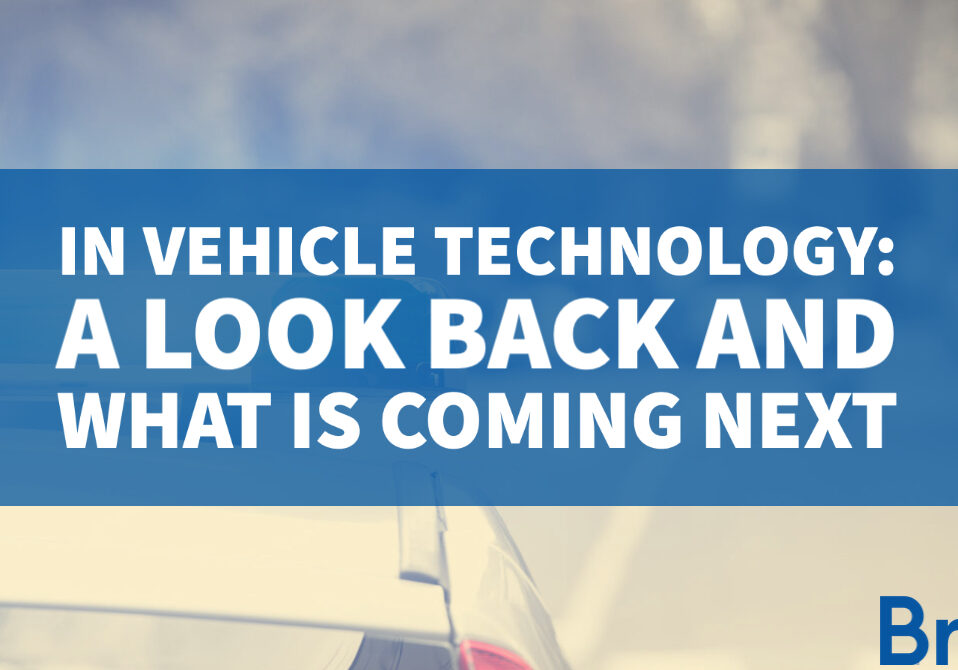In Vehicle Technology: A Look Back and What is Coming Next
February 11, 2021
In Vehicle Technology: A Look Back and What is Coming Next
Police Officers are constantly adapting their equipment to their environment and daily demands. The concept of the cruiser being a mobile office was developed by those who worked long shifts and thought: “What could be added to this car to make my job easier? Make me more comfortable? Help me to hunt down dangerous offenders?”
Mouse Ears and Bench Seats
Looking back to a former patrol car, a 1979 Plymouth Fury, there were no rotating lights – just the two can lights on the roof solid red to front and flashing amber to the rear. Of course, they looked like ears on the black and white rodent thus the term mouse ears. Mounted between them was the siren which was much louder inside the car than outside. The Plymouth had a radio with a single base frequency and two tactical frequencies. As soon as the officer got out of the car, he/she was out of contact with the station. Throughout the 1970ѕ, it was innovations coming from individual police officers that improved the mobile offices.
The Age of the Add-on
Beginning in the 1980ѕ, larger agencies started to introduce portable two-way radios and computer terminals in vehicles. These early Mobile Digital Terminals (MDT) provided the officer with access through their agency to motor vehicle information, some wanted persons databases like the National Crime Information Center (NCIC) and local stolen vehicle information. Early MDTs were simple gateways to whatever mainframe computer your agency was using. Unlike your desktop PC, laptop or the computer likely in a cruiser today, MDTs could not perform simple computing tasks like word processing or a calculator.
There were many challenges to the early MDTs. For instant, through the 1990ѕ, installation of new electronic equipment was done on an ad-hoc basis. Because new technology was added inter the police cruiser as an afterthought, officer safety was not at the top of the list.
Early police vehicles had bench seats. So, terminals were mounted on a pole in front of the dashboard, between the passenger and the driver. For the driver or the passenger to access the terminal it was mounted on a swivel. At first, a resistance ring was used so that the terminal did not swing freely. However, police work is 24/7 and, except for maintenance periods, cop cars are often handed off from shift to shift. Constant use weakened the swivel resistance mechanism so that it wasn’t long before the terminal swung with the motion of the vehicle, striking your knees.
Police equipment is exposed to extreme temperature variations and constant use. Today’s technology has been improved and adapted so that it is highly usable in the field. The ad-hoc period of police mobile computing brought about many of the innovations used today like real computing power in the vehicle, technology adapted to your environment, and improved maintenance.
These seat bolt mounted monitors would be accompanied by a CPU box in the trunk creating the 3 piece MDT. This made any maintenance that needed to be done on either the vehicle or the computer nearly impossible. Moving forward, the industry saw huge laptops that would obstruct the view of the driver and endanger the passenger by block airbags. The over-sized computers were deemed necessary as they could withstand the harsh environment. Now, the key to the best MDT is having the correct screen size, but not over bearing in a shrinking cockpit, while being lightweight to allow officers to remove the equipment form the vehicle to take them on scene.
Today and in the Future
There are many aspects of technology that have improved police work. The most efficient ways of improving this technology is to hear from the people that use it every day. Brite has seen police vehicles move from bench seats and bulky radios to tactical consoles and sleek tablets. In car technology today has drastically changed in a short period. This is driven by the evolving need to serve and protect our communities.
The days of leaving the car and not being connected to headquarters is over. Now, officers have modem technology to allow a police officer to turn their vehicle into a hotspot, connect all devices to the internet to receive data and take their computer further onto the scene. Tablet solutions that can easily be removed from the car, creating a truly mobile platform, are even becoming common in many agencies.
Considering the future, mobile vehicle technology must continue to adapt to the changing environment to provide police officers with the best equipment to protect our communities efficiently.
Brite’s tablet solution was built by police officers, for police officers and has adapted over the years to meet the needs of police officers and first responders.
Interested in learning more about Brite’s in-vehicle solutions? Contact us and connect with your rep today!

